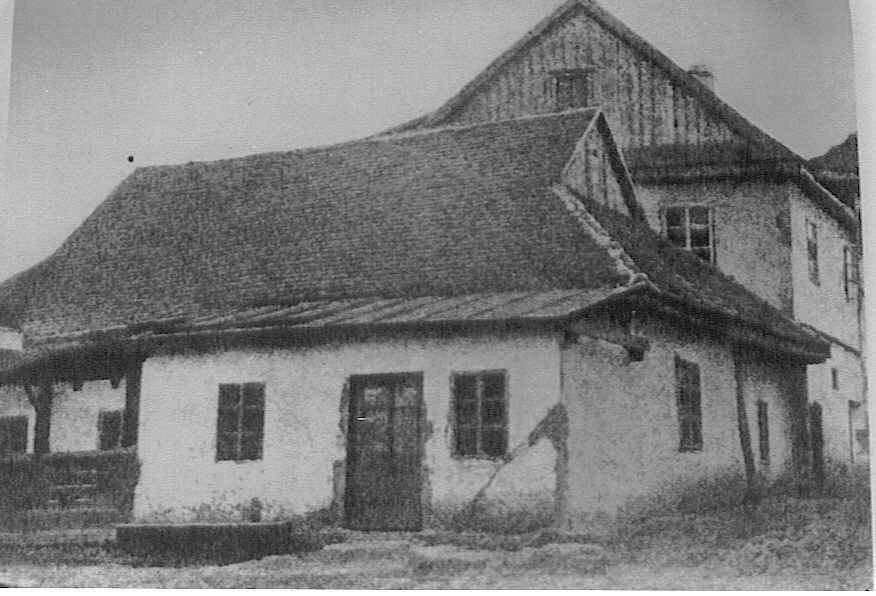|
Ba'al Shem
A ''Baal Shem'' (Hebrew: בַּעַל שֵׁם, pl. ''Baalei Shem'') was a historical Jewish practitioner of Practical Kabbalah and miracle worker. Employing various methods, ''Baalei Shem'' are claimed to heal, enact miracles, perform exorcisms,''Studies in East European Jewish Mysticism and Hasidism'', Joseph Weiss, Littman Library: chapter 1 "Some Notes on the Social Background of Early Hasidism", chapter 2 "A Circle of Pneumatics in Pre-Hasidism" treat various health issues, curb epidemics, protect people from disaster due to fire, robbery or the evil eye, foresee the future, decipher dreams, and bless those who sought his powers. In Judaism, similar figures arbitrated between earthly realities and spiritual realms since before the establishment of Talmudic Judaism in the 3rd century. However, it was only in the 16th century that the figures were called ''Baalei Shem''. Herbal folk remedies, amulets, contemporary medical cures as well as magical and mystical solutions were use ... [...More Info...] [...Related Items...] OR: [Wikipedia] [Google] [Baidu] |
Baal Shem Of London
Hayyim Samuel Jacob Falk (; 1708 – 17 April 1782), also known as the Baal Shem of London and Doctor Falckon, was a rabbi, ''Baal Shem'', kabbalist and alchemist. Biography Falk was born in either Furth in Bavaria or Pidhaytsi in Podolia. After the rabbi narrowly escaped being burnt at the stake by the authorities in Westphalia who had charged him with sorcery, the German Count Alexander Leopold Anton von Rantzau secretly gave him refuge in Holzminden. During this stay there in 1736, Falk made impressive kabbalistic performances in Rantzau's castle, witnessed by noblemen and the Count's son Georg Ludwig Albrecht. The latter's memoirs contain a detailed account of these mystical demonstrations. Sometime after 1736, Falk arrived in London. He lived at 35 Prescott Street, London, United Kingdom and at Wellclose Square, London until his death. He was a neighbour of Emanuel Swedenborg and there is some evidence that he had a significant influence on him. Rabbi Jacob Emden accused h ... [...More Info...] [...Related Items...] OR: [Wikipedia] [Google] [Baidu] |
Elijah Ba'al Shem Of Chełm
Elijah bar Aaron Judah Baal Shem (about 1520 –1583) was a Polish rabbi and kabbalist who served as chief rabbi of Chełm. Jewish Encyclopedia Bibliography: Friedberg, ''Luḥot Zikkaron'', p. 32, Drohobycz, 1897; Jacob Emden, EmdenMegillat Sefer, p. 4 Warsaw, 1896; Horodetzky, Kerem Shelomoh, p. 33, Drohobycz, 1896; Ha-Meassef, p. 157, St. Petersburg, 1902. One of the most eminent Talmudists of his generation, he is recorded as the first person known by the epithet "Ba'al Shem" having been considered a great saint and believed to have used miraculous powers to create a golem. Life Elijah was born to his father Aaron Judah in 1520. About 1565, he entered the yeshiva of Rabbi Solomon Luria of Lublin, and after receiving his rabbinical ordination, became rabbi of Chełm, a position he held for the rest of his life. In 1564, he gathered with other prominent rabbis, including his teacher, to cosign the halachic rulings, which allowed an ''agunah'' to remarry. His great-granddaughter m ... [...More Info...] [...Related Items...] OR: [Wikipedia] [Google] [Baidu] |
Ashkenazi
Ashkenazi Jews ( ; also known as Ashkenazic Jews or Ashkenazim) form a distinct subgroup of the Jewish diaspora, that Ethnogenesis, emerged in the Holy Roman Empire around the end of the first millennium Common era, CE. They traditionally speak Yiddish, a language that originated in the 9th century, and largely migrated towards Northern Europe#UN geoscheme classification, northern and eastern Europe during the late Middle Ages due to Antisemitism in Europe, persecution. Hebrew was primarily used as a Literary language, literary and sacred language until its 20th-century Revival of the Hebrew language, revival as a common language in Israel. Ashkenazim adapted their traditions to Europe and underwent a transformation in their interpretation of Judaism. In the late 18th and 19th centuries, Jews who remained in or returned to historical German lands experienced a cultural reorientation. Under the influence of the Haskalah and the struggle for emancipation, as well as the intellec ... [...More Info...] [...Related Items...] OR: [Wikipedia] [Google] [Baidu] |
Besht Shul1 Medzhibozh
Israel ben Eliezer (According to a forged document from the "Kherson Geniza", accepted only by Chabad, he was born in October 1698. Some Hasidic traditions place his birth as early as 1690, while Simon Dubnow and other modern scholars argue for a date around 1700. –1760), known as the Baal Shem Tov (; ) or BeShT (), was a Jewish mystic and healer who is regarded as the founder of Hasidic Judaism. A ''baal shem tov'' is a "Master of the Good Name," that is, one able to work miracles using the secret name of God. Other sources explain his sobriquet as arising from a reputation of being a saintly, or superior, Baal Shem "miracle-worker", hence he was given the nickname Baal Shem ''Tov'', the "good Baal Shem". Biographical information about the Baal Shem Tov comes from contemporary documents from the Polish–Lithuanian Commonwealth and the legendary traditions about his life and behavior collected in the ''Praise of the Besht'' (). A central tenet of the teachings associated ... [...More Info...] [...Related Items...] OR: [Wikipedia] [Google] [Baidu] |


